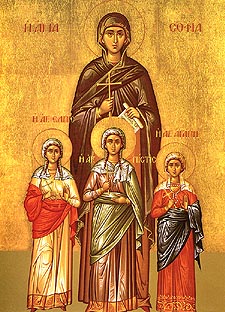 July 22
July 22
One of the myrrh-bearing women and equal to the apostles, Mary was born in the town of Magdala, along the shore of Lake Gennesaret, of the tribe of Issacher. She was tormented by seven evil spirits – from which she was freed by the Lord Jesus and made whole. She was a faithful follower and servant of the Lord during His earthly life. She stood beneath the Cross on Golgotha, and grieved bitterly with the All-holy Theotokos. After the death of the Lord she visited His sepulcher three times. When the Lord rose again she saw Him on two occasions: once by herself, and once with the other myrrh-bearing women. She traveled to Rome and appeared before Tiberias Ceasar, presenting him with a red egg, and giving him the salutation: “Christ is Risen!” She also denounced Pontius Pilate to Caesar for his unjust condemnation of the Lord Jesus. Caesar accepted her accusation, and transferred Pilate from Jerusalem to Gaul where, in disfavor with the emperor, this unjust judge died of a dread disease. After this, she returned from Rome to Ephesus, to assist St. John the Theologian in the work of preaching the Gospel. With great love toward the resurrected Lord, with great zeal for the Faith and as a true apostle of Christ, she proclaimed the Holy Gospel to the world. She died peacefully in Ephesus. According to tradition, the cave she was buried in was the same cave in which the Seven Youths (August 4) later slept a wondrous sleep for hundreds of years, then came to life and again died. The relics of St. Mary Magdalene were later transferred to Constantinople. There is a beautiful Russian Orthodox convent dedicated to St. Mary Magdalene near the Garden of Gethsemane.




